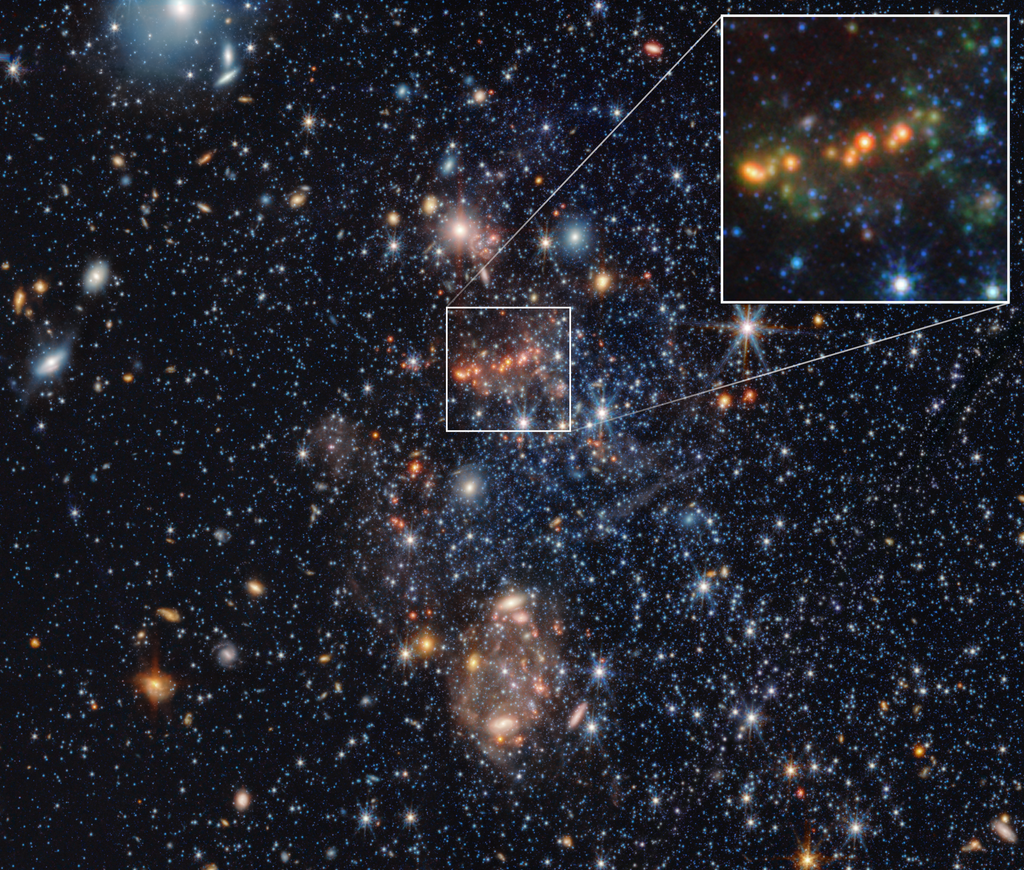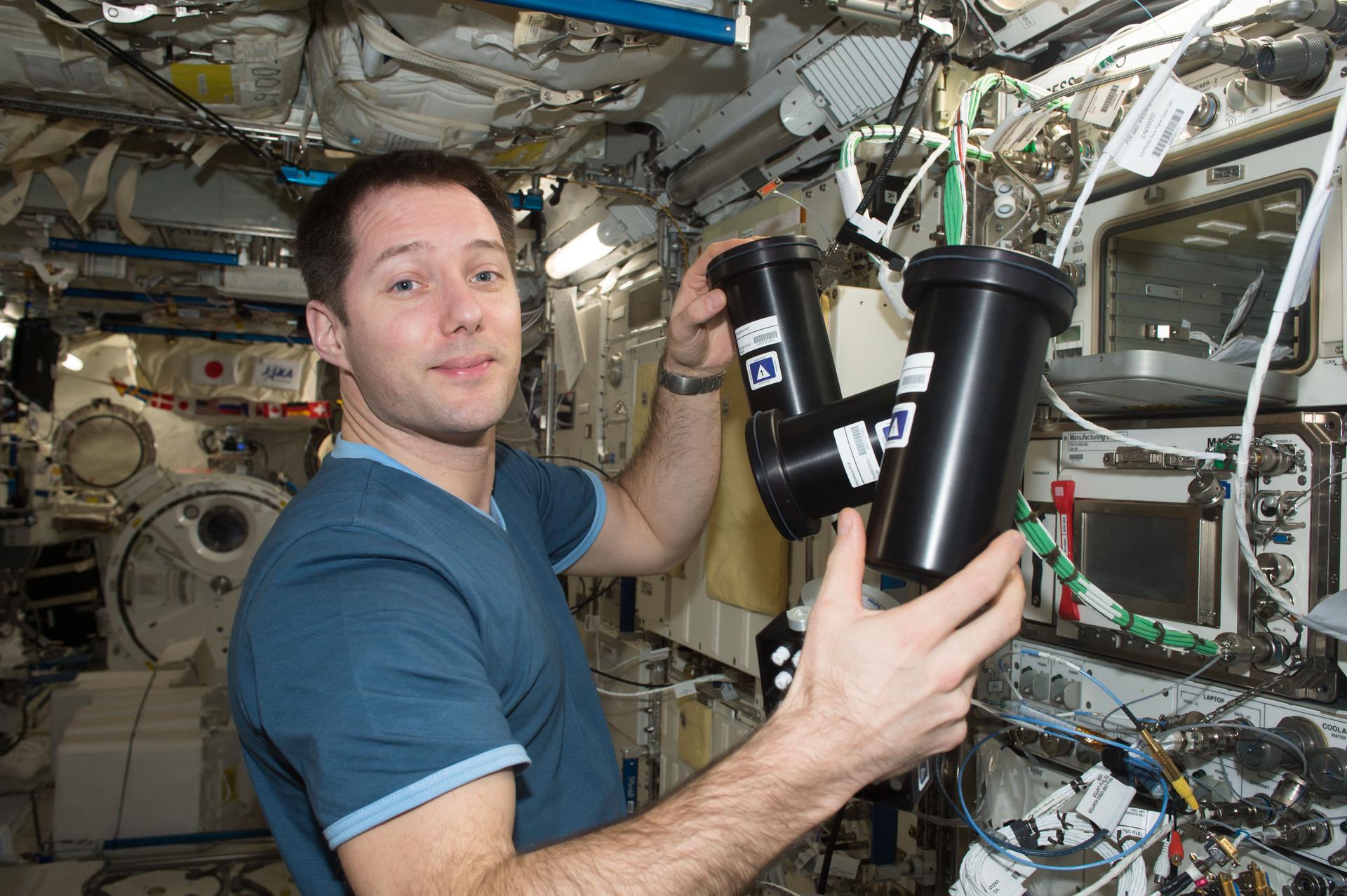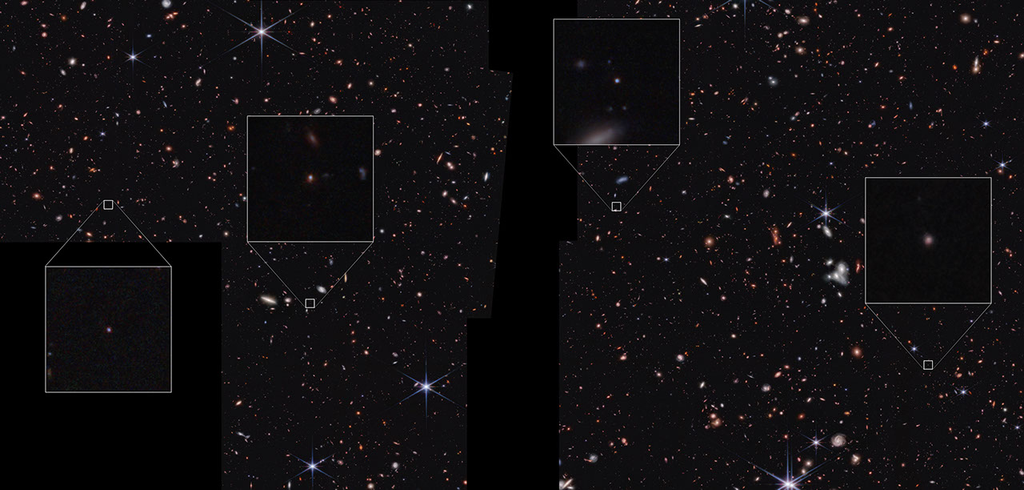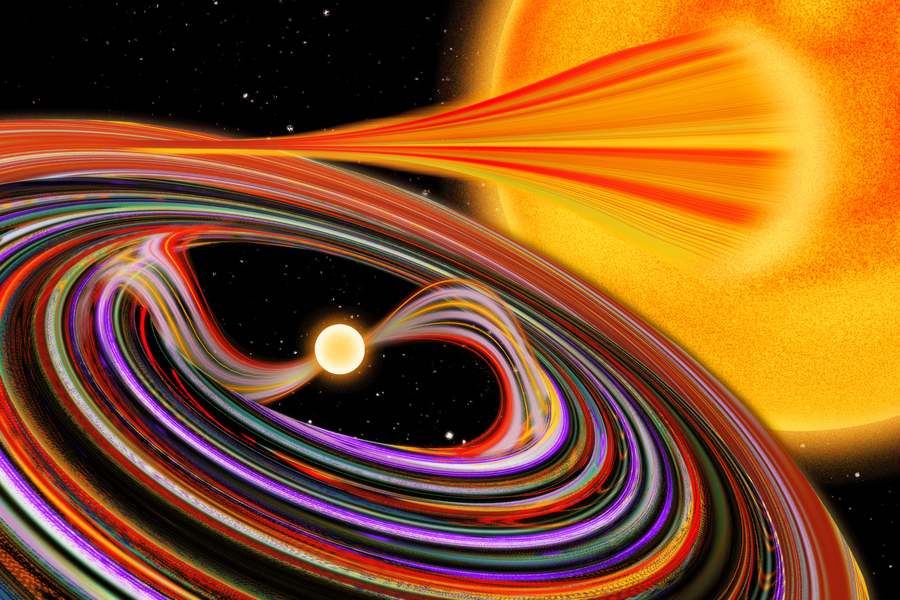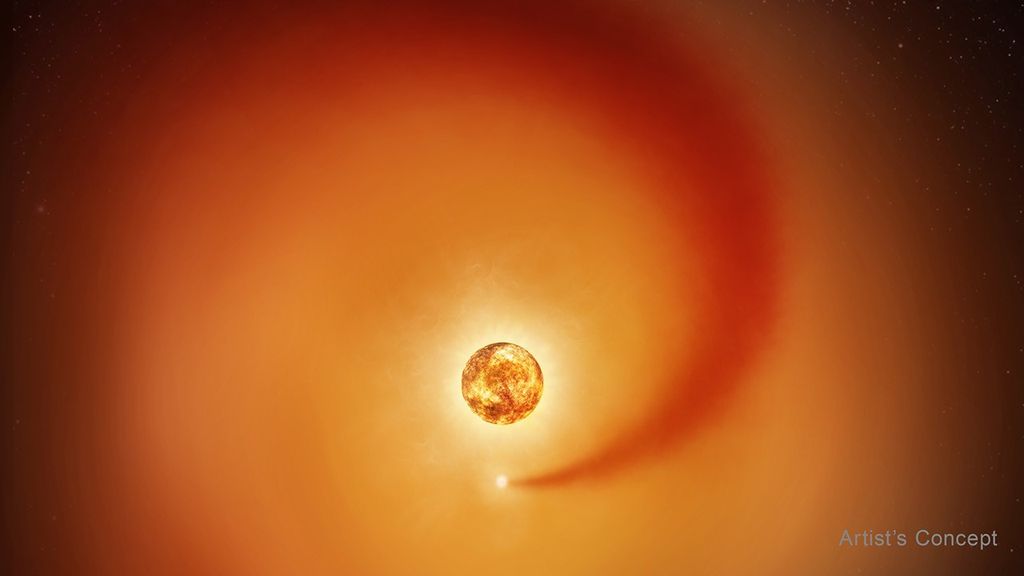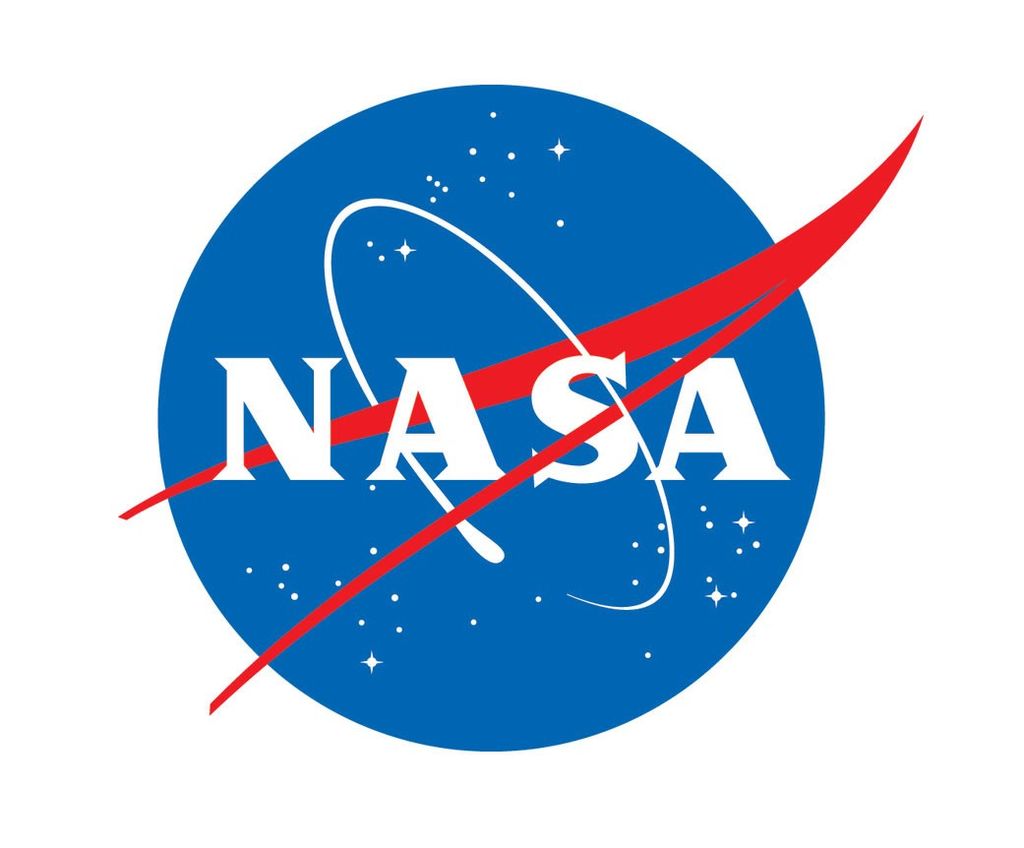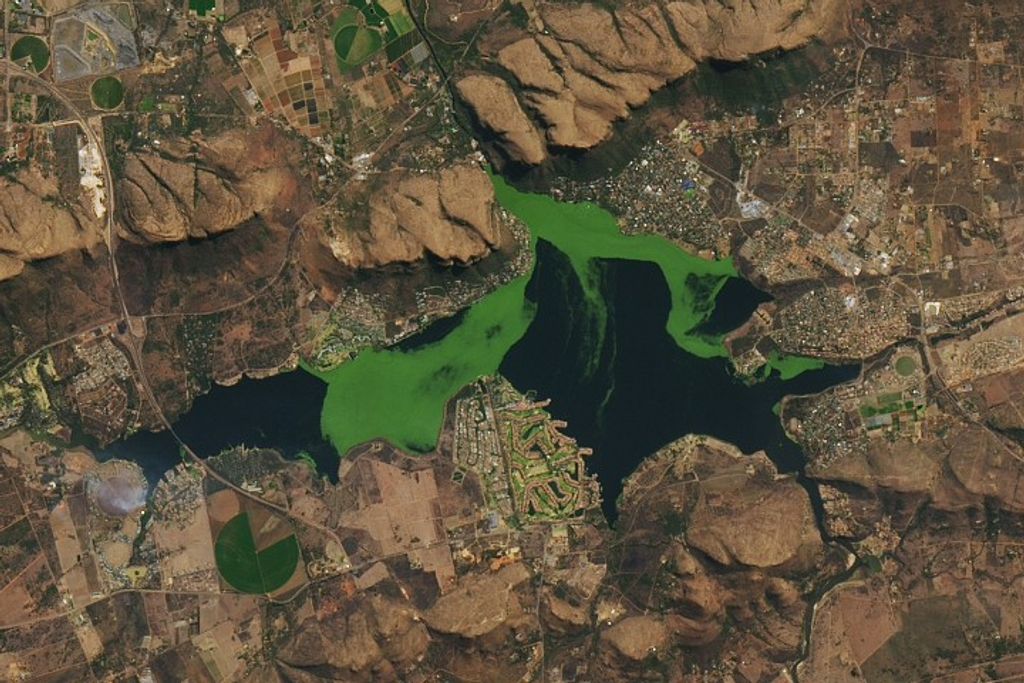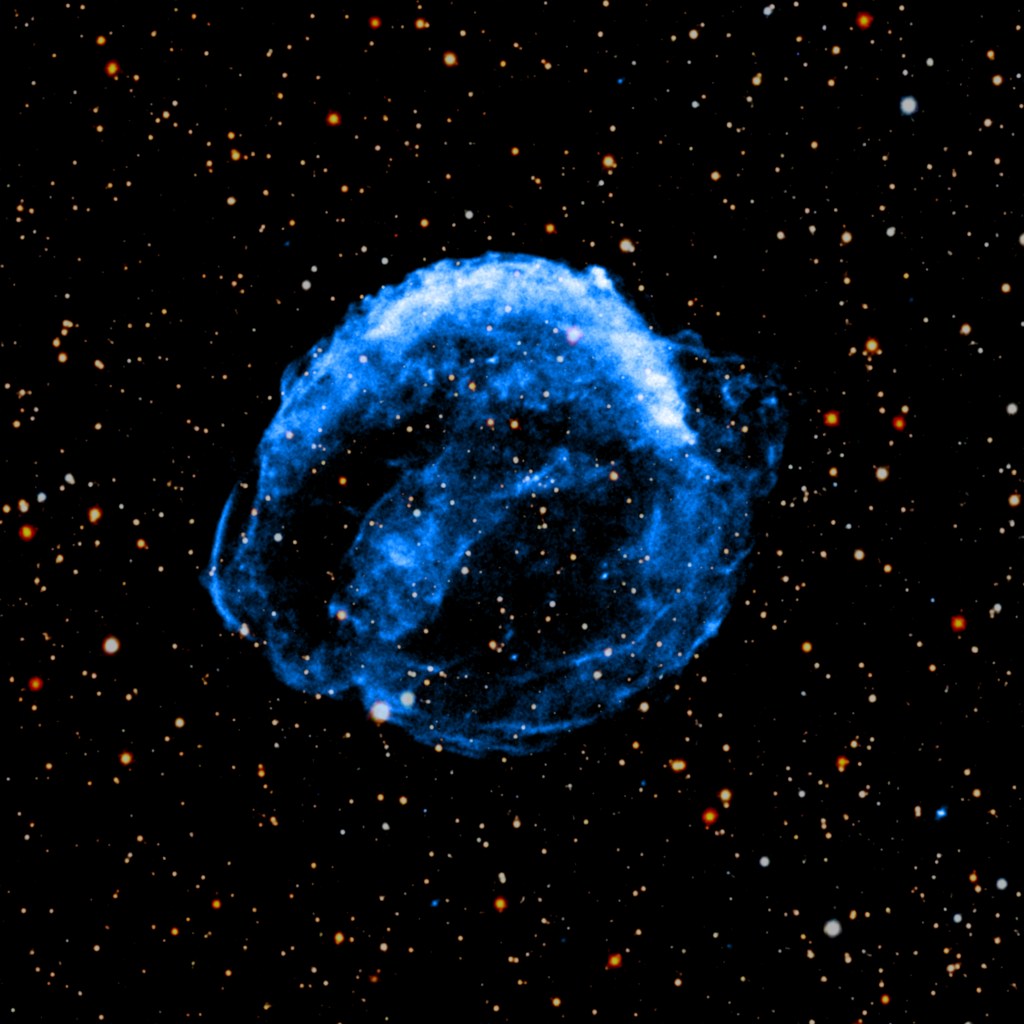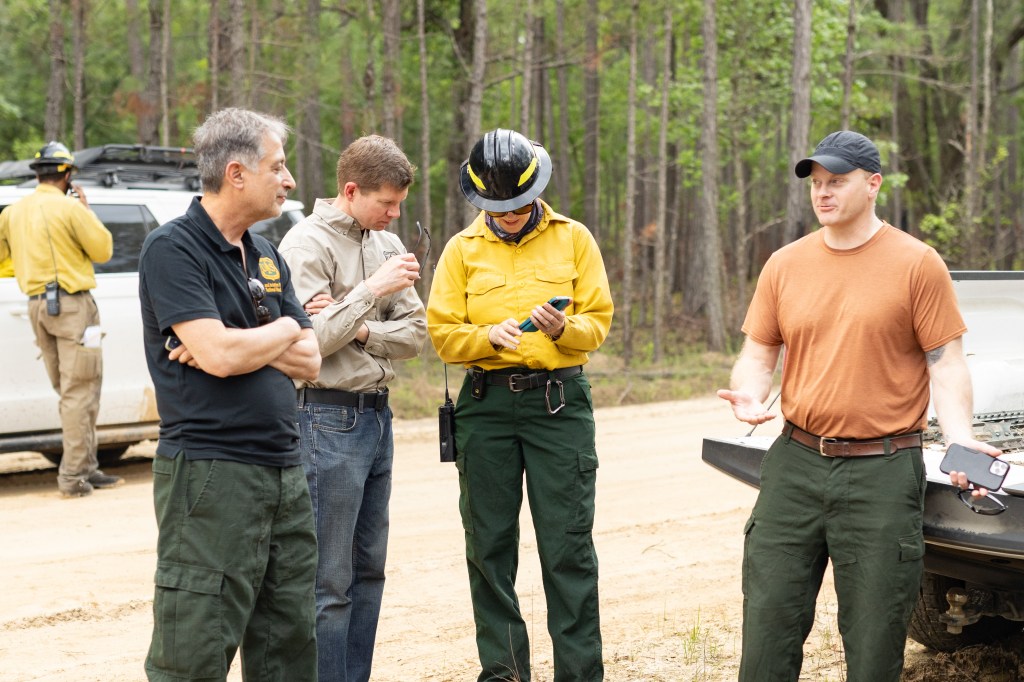1 min read
Tarantula Nebula Annotated Map
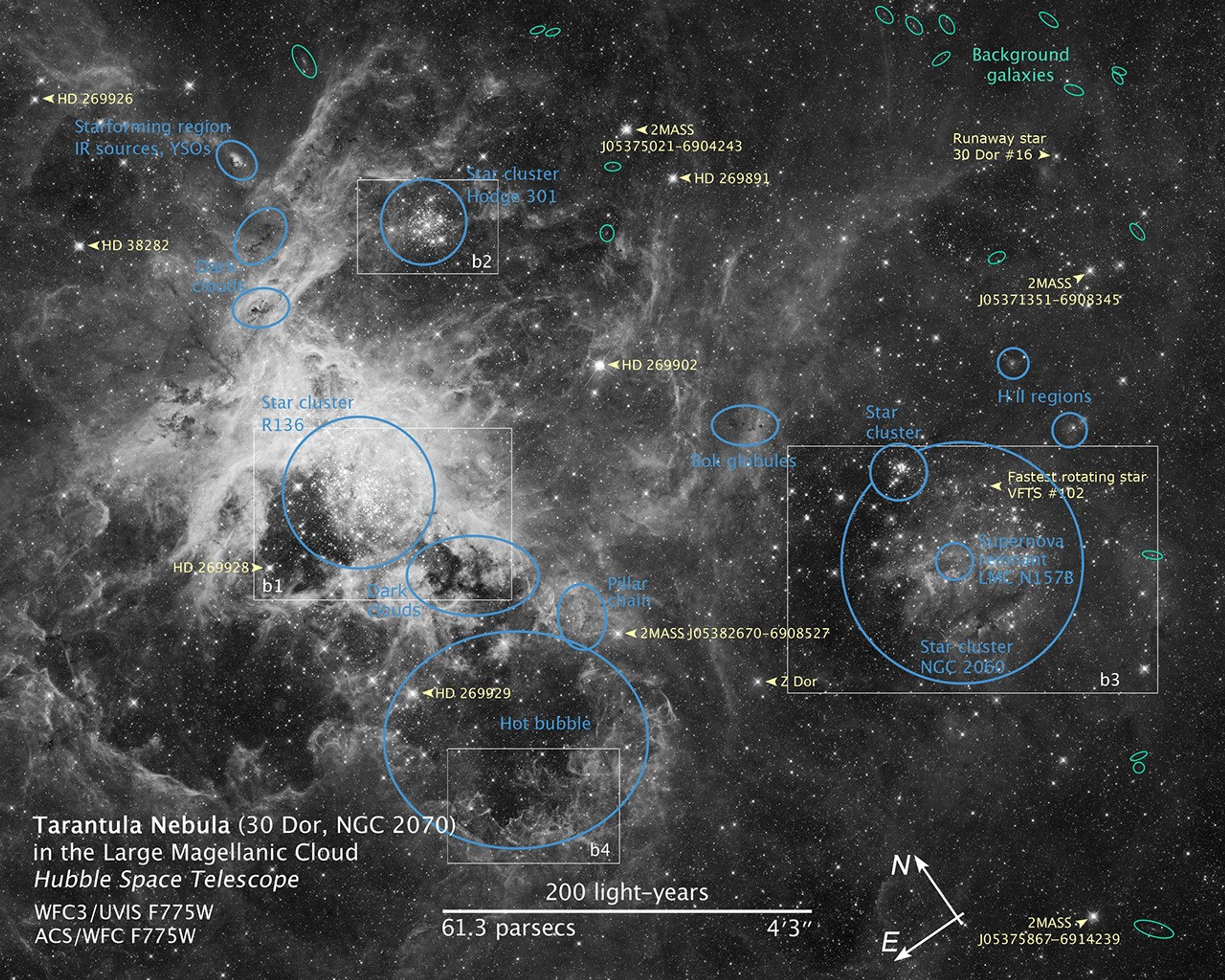
This annotated map identifies several prominent features in an image of the Tarantula Nebula (also known as 30 Doradus), a prominent region of star formation located in the Large Magellanic Cloud (LMC), the nearest neighboring galaxy to the Milky Way. The image was produced from numerous exposures by the Hubble Space Telescope's Wide Field Camera 3 and Advanced Camera for Surveys in red/near-infrared light.
Individual stars Some prominent stars are labeled in yellow. Some of these are identified in the Henry Draper Catalog (HD). The stars labeled 2MASS appear in the catalog of objects identified by the 2-Micron All Sky Survey, relatively brighter in infrared light and faint enough in visible light not to appear in catalogs such as HD based on visual observations.
Particularly significant stars identified are: 30 Dor #16, a "runaway" star ejected from the prominent star cluster 30 Doradus, and VFTS #102, the star with the fastest known rotation rate.
Background galaxies Several background galaxies are visible in the image, labeled in green, though they appear very small because they are much more distant than the Large Magellanic Cloud. A large amount of gas and dust is associated with the LMC and the Tarantula Nebula in particular, obscuring most of the light from more distant sources. Near the edges of the nebula, some galaxies are visible, where the obscuration is not enough to completely block the more distant objects.
These galaxies can provide an absolute reference for measuring the positions and motions of the stars within the Tarantula and the LMC. The motion of these objects is extremely difficult to measure precisely because of the vast distance to the LMC. However with the fine resolution of Hubble's cameras it is possible to measure the motions in images taken some time apart. The background galaxies are immensely farther away, so their positions within the field of view is essentially fixed, providing a frame of reference against which the positions and motions of the closer objects in the Tarantula and LMC can be compared.
Star clusters Numerous star clusters are scattered in the Tarantula Nebula region, labeled in blue. They formed at different times from giant clouds of gas and dust. Characteristics of the clusters as a whole and their constituent stars enable astronomers to determine their relative ages. The most massive, hottest stars emit copious high-energy radiation, pushing away, compressing, and sculpting the remaining gas and dust, triggering another generation of star formation.
Dark clouds Dense, cooler, dusty clouds obscure the light from more distant stars, appearing dark against stars and glowing gas behind them, here labeled in blue. The smallest, densest dark clouds are known as Bok globules, in which new stars are likely forming.
About the Object
- R.A. PositionR.A. PositionRight ascension – analogous to longitude – is one component of an object's position.05h 38m 42.36s
- Dec. PositionDec. PositionDeclination – analogous to latitude – is one component of an object's position.-69° 6' 3.24"
- ConstellationConstellationOne of 88 recognized regions of the celestial sphere in which the object appears.Dorado
- DistanceDistanceThe physical distance from Earth to the astronomical object. Distances within our solar system are usually measured in Astronomical Units (AU). Distances between stars are usually measured in light-years. Interstellar distances can also be measured in parsecs.Approximately 170,000 light-years (52,000 parsecs)
- DimensionsDimensionsThe physical size of the object or the apparent angle it subtends on the sky.This image is roughy 14.4 arcminutes (662 light-years or 204 parsecs) wide.
About the Data
- Data DescriptionData DescriptionProposal: A description of the observations, their scientific justification, and the links to the data available in the science archive.
Science Team: The astronomers who planned the observations and analyzed the data. "PI" refers to the Principal Investigator.This image combines many exposures from the Hubble Space Telescope's Advanced Camera for Surveys (ACS) and Wide Field Camera 3 (WFC3) from the HST proposal 12499: D. Lennon and E. Sabbi (ESA/STScI), J. Anderson, S. E. de Mink, R. van der Marel, T. Sohn, and N. Walborn (STScI), N. Bastian (Excellence Cluster, Munich), L. Bedin (INAF, Padua), E. Bressert (ESO), P. Crowther (University of Sheffield), A. de Koter (University of Amsterdam), C. Evans (UKATC/STFC, Edinburgh), A. Herrero (IAC, Tenerife), N. Langer (AifA, Bonn), I. Platais (JHU), and H. Sana (University of Amsterdam). - InstrumentInstrumentThe science instrument used to produce the data.HST>ACS/WFC and HST>WFC3/UVIS
- Exposure DatesExposure DatesThe date(s) that the telescope made its observations and the total exposure time.October 2011
- FiltersFiltersThe camera filters that were used in the science observations.ACS/WFC and WFC3/UVIS: F775W (SDSS i)
- Object NameObject NameA name or catalog number that astronomers use to identify an astronomical object.Tarantula Nebula, 30 Doradus, 30 Dor, NGC 2070
- Object DescriptionObject DescriptionThe type of astronomical object.Emission Nebula in the Large Magellanic Cloud
- Release DateApril 17, 2012
- Science ReleaseHubble’s 22nd Anniversary Image Shows Turbulent Star-making Region
- Credit

This image is a composite of separate exposures made by the ACS and WFC3 instruments on the Hubble Space Telescope.

Related Images & Videos

Hubble's Panoramic View of a Turbulent Star-making Region
Several million young stars are vying for attention in this NASA Hubble Space Telescope image of a raucous stellar breeding ground in 30 Doradus, located in the heart of the Tarantula Nebula. Early astronomers nicknamed the nebula because its glowing filaments resemble spider...
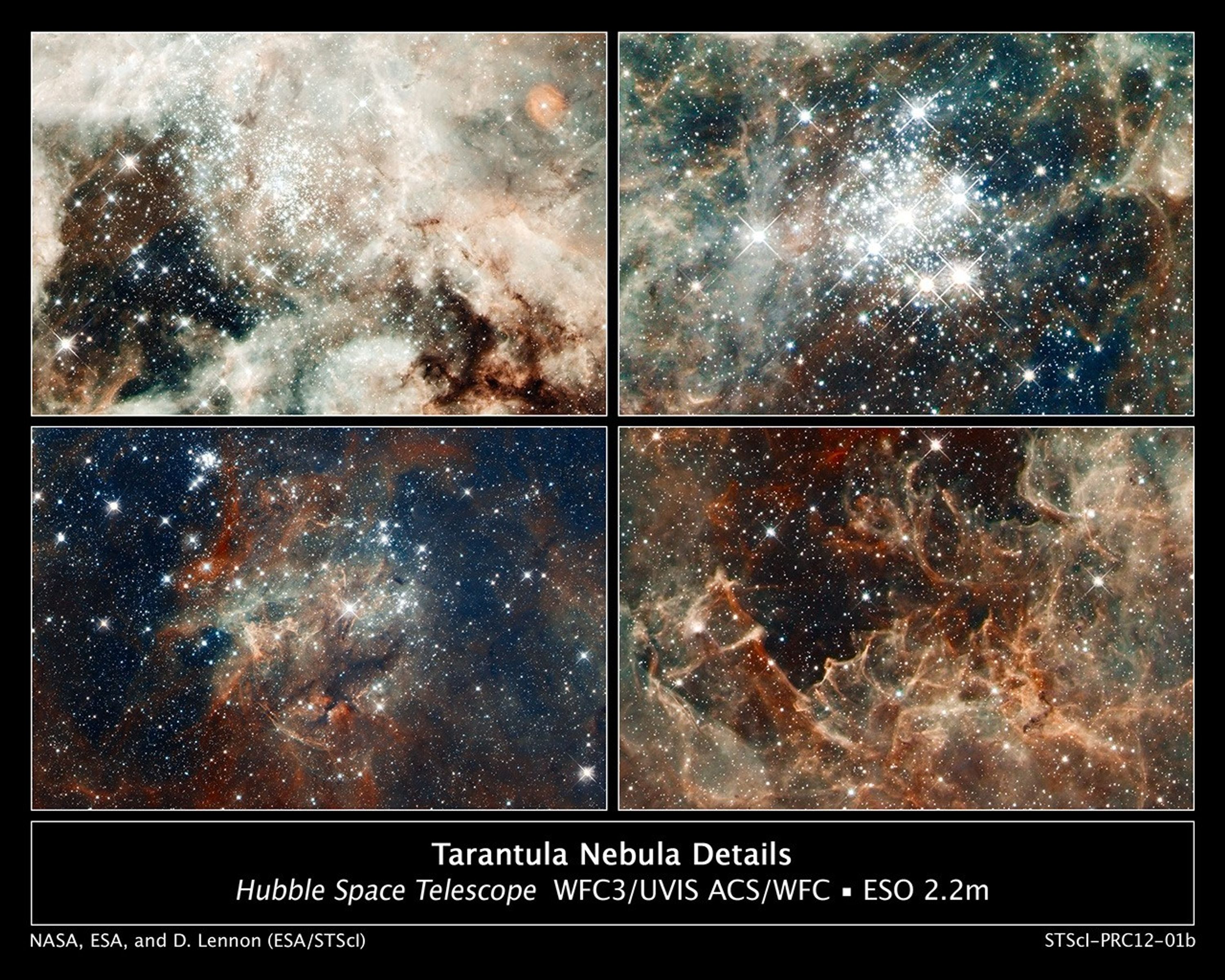
Close-up Images of 30 Doradus Features
From massive star clusters to sculpted gas embedded with fledgling stars, these four close-up images underscore why 30 Doradus, located in the heart of the Tarantula Nebula, is a star-making factory. 30 Doradus is the brightest, nearby star-forming region and home to the most...

Hubble Images 30 Doradus: NGC 2070
The nebula's sparkling centerpiece is a giant, young star cluster named NGC 2070, only 2 million years old. Its stellar inhabitants number roughly 500,000. The cluster is a hotbed for young, massive stars. The cluster's dense core, known as R136, is packed with some of the...

Hubble Images 30 Doradus: Hodge 301
The star cluster Hodge 301 is 20 million to 25 million years old. Hodge 301 is home to many aging, red supergiant stars, indicating the cluster is older. Roughly 40 massive stars already have exploded as supernovas. The expanding wave of debris is slamming into gas ejected by...

Hubble Images 30 Doradus: NGC 2060
The star cluster NGC 2060 is a loose collection of stars that are no longer gravitationally bound to each other. The stellar grouping will disperse in a few million years. It contains a supernova that exploded about 10,000 years ago, blowing out gas surrounding it. The dark...

Hubble Images 30 Doradus: the Effects of Massive Stars in R136
This region resembles a coral reef, but the gas has been eroded by the hefty stars in R136, situated above it. Cloaked in gas at the top of this rugged, gaseous terrain are nascent stars that cannot be seen. Dense columns of gas, several light-years long, protrude from the...

The Tarantula Nebula in the Large Magellanic Cloud
A Hubble Space Telescope composite image of a portion of the Tarantula Nebula's central cavity illustrates the profound effect new stars can have on their environment. The young stars of 30 Doradus are acting something like cosmic, decidedly non-eco-friendly light bulbs. Each...
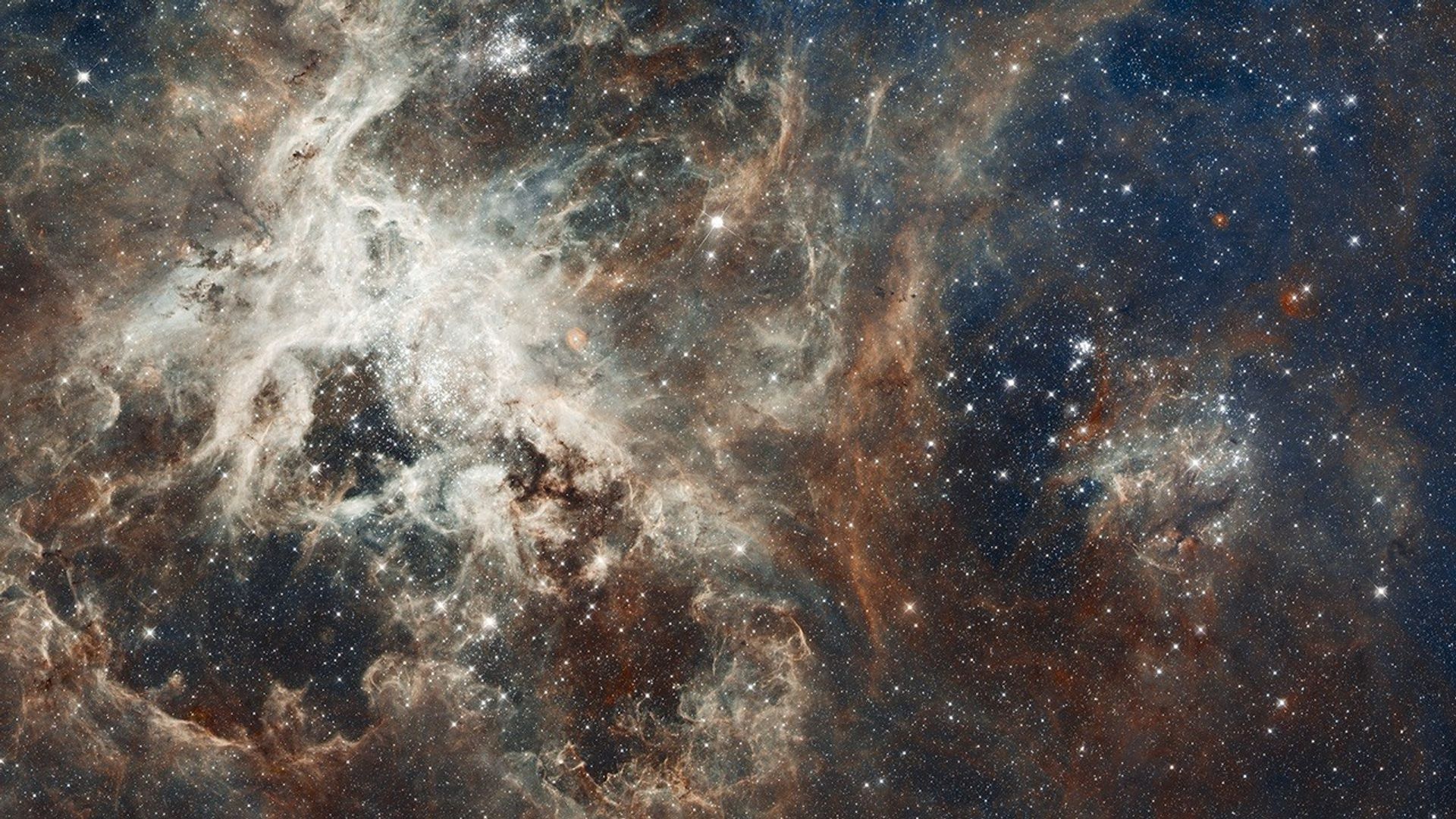
Zoom and Pan into 30 Doradus (with narration and music)
This video is a zoom into the largest star-forming region in the satellite galaxy, Large Magellanic Cloud. At the heart of the small galaxy is the Tarantula nebula. Hubble unveils a rich tapestry of star birth and star destruction among its millions of stars. The video zooms...
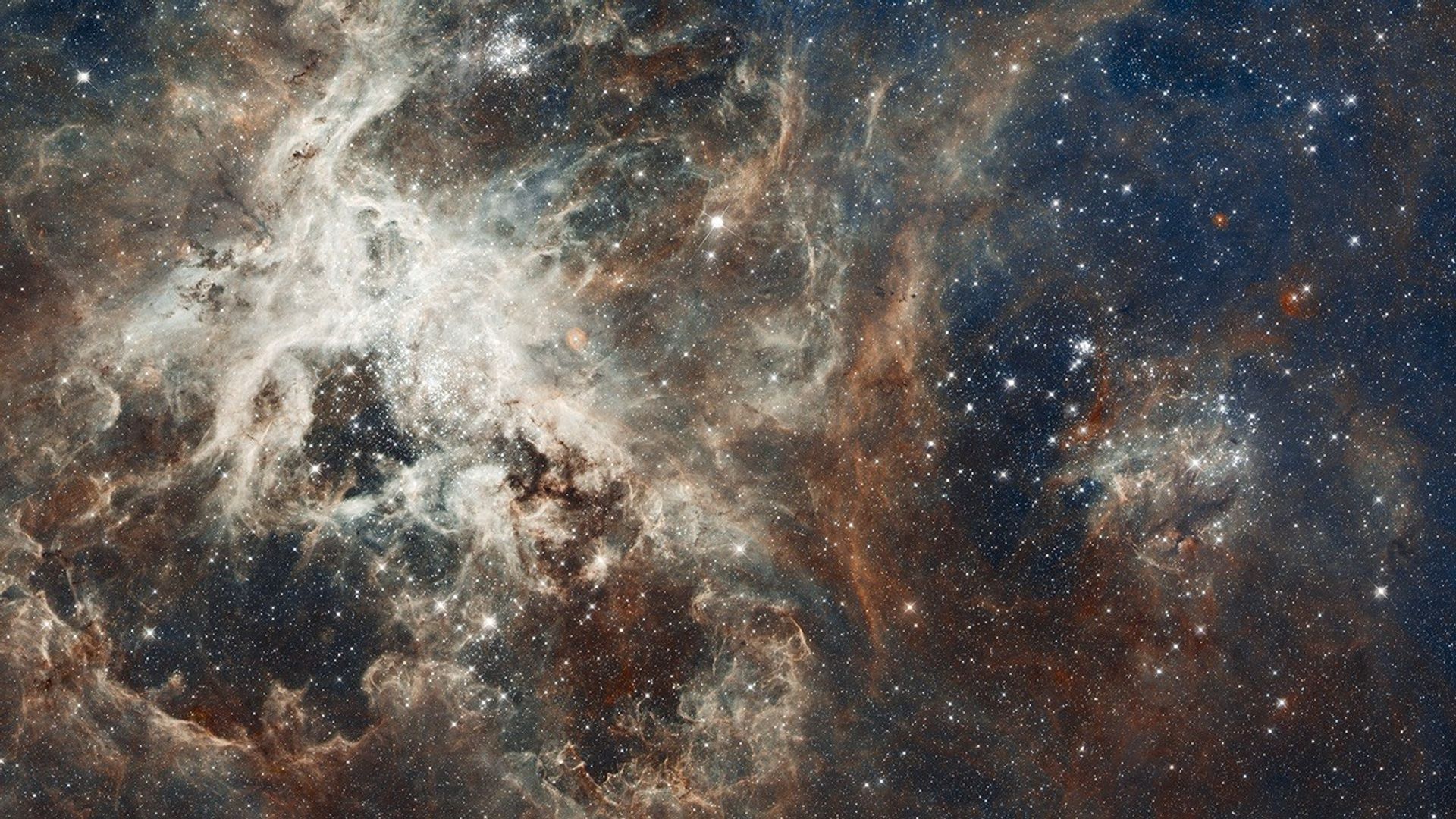
Zoom and Pan into 30 Doradus (without audio)
This video is a zoom into the largest star-forming region in the satellite galaxy, Large Magellanic Cloud. At the heart of the small galaxy is the Tarantula nebula. Hubble unveils a rich tapestry of star birth and star destruction among its millions of stars. The video zooms...
Share
Details
Claire Andreoli
NASA’s Goddard Space Flight Center
Greenbelt, Maryland
claire.andreoli@nasa.gov

